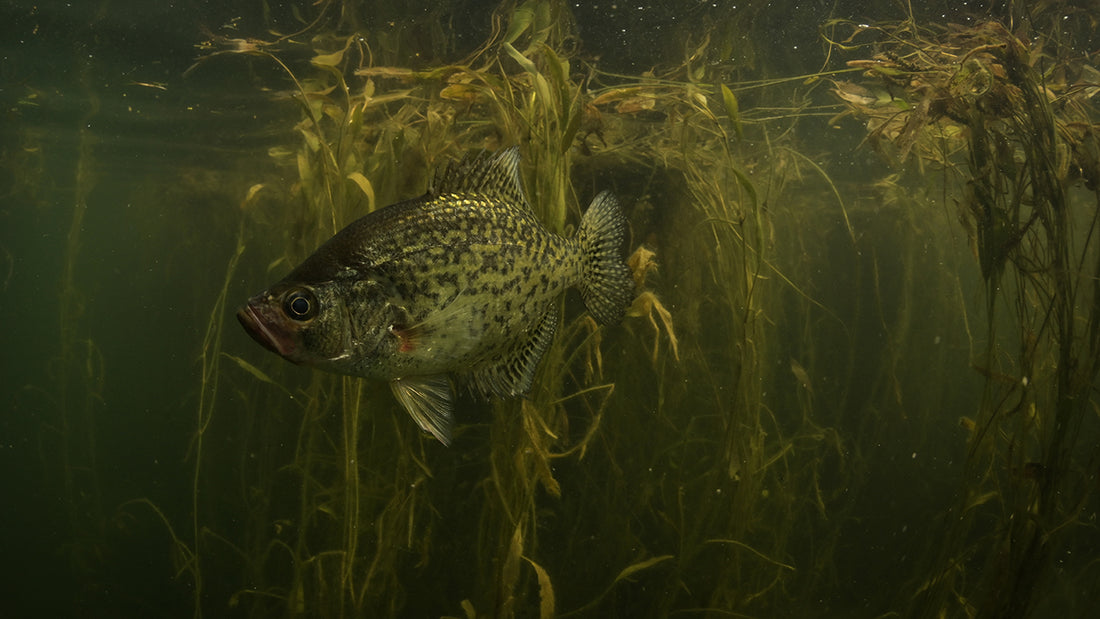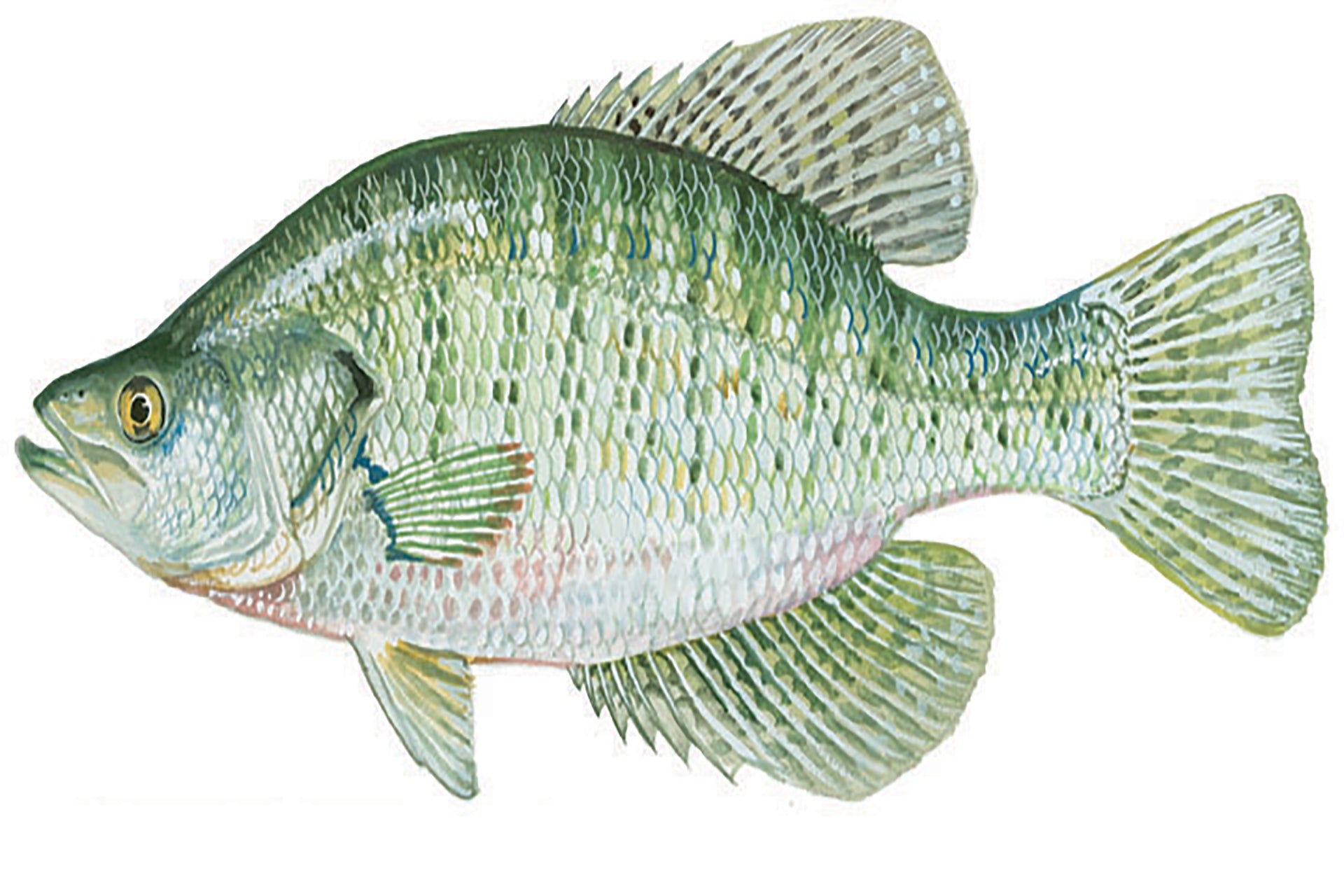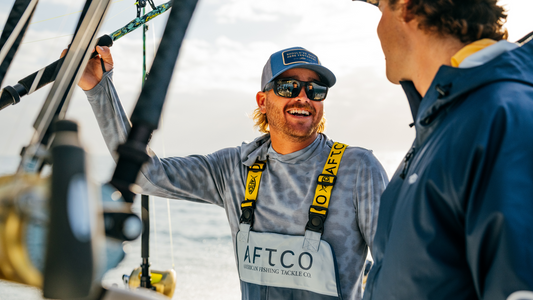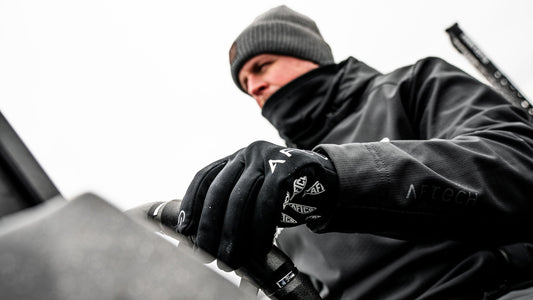
Species Spotlight: Crappie
Black: Pomoxis nigromaculatus
White: Pomoxis annularis


These members of Centrarchidae, the family of largemouth and smallmouth bass and sunfishes, look like no others, though the two species resemble each other quite closely. Crappie — found only in North America — aren’t known for a determined fight when hooked, but they can be eager biters found in schools and make for good action. And they’re widely appreciated for being outstanding eating, much sought as table fare. Most are caught on very small jigs, small live minnows, or some combination.

Appearance: The characteristic flattened shape, with nearly symmetrical dorsal and anal fins, and olive/silvery sides with black spotting, gives crappie a distinctive look.
Location/habitat: Crappie are found in all but a few states in the U.S. as well as in southern Canada. Though available in some large, slow-moving rivers, mostly crappie inhabit lakes and reservoirs (and large ponds).
Size: Most often, the crappie anglers catch are less than a pound to a good bit more. Anything near or over two pounds is pushing trophy size. The IGFA all-tackle world-record black weighed 5 pounds, 7 ounces, caught in Tennesee in 2018; the all-tackle white weighted 5 pounds, 3 ounces, taken in Mississippi in 1957.
Pros: Often abundant and found in schools (in most areas, daily limits are quite generous); willing biters; superb white, mild flesh.
Cons: Don’t look for any challenge to land once hooked, nor for many fish of any size.
Pro Tips on How to Catch Crappie
Russell Riley of Blythewood, South Carolina, is a crappie expert (and AFTCO pro) who continues to win tournaments, with 14 years on the crappie-tournament circuit. (For more on that, see Crappie USA.) He offers a few bits of advice:
- Work ‘em hard in late winter and/or spring (depending upon one’s region). That’s when they’re most active — during prespawn and spawning times.
- Keep an eye on water temps: At 55 to 60 degrees, the fish start moving in, in preparation for spawning.
- At 60 degrees they’ll head close to the bank to spawn. Cast little (1/8th,1/16th or even smaller) jigs toward the bank, let them sink into the strike zone and work ‘em back.
- At other times of year, often best to “longline troll” for them with multiple rods pulling jigs — often tipped with live minnows — at various depths and distances back. In warm weather, don’t neglect brushpiles and docks, either.
- Get yourself a Garmin Panoptix LiveScope or similar scanning unit. True, a bit pricey for most weekend anglers, but those serious about crappie have made this a game changer, one that allows anglers to not simply locate crappie, even in open water, but to target individual fish of trophy size.






